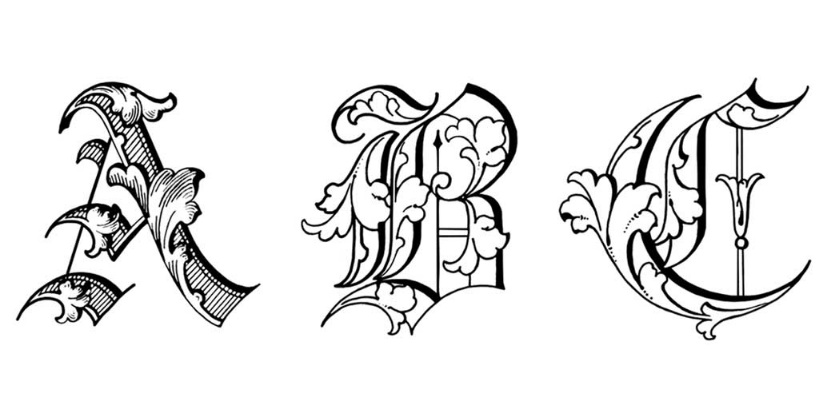The early alphabetic writing started about four thousand years ago. According to many scholars, it was in Egypt.Then the Phoenicians developed an alphabet based on Egyptian foundations.
The alphabet was made up of 22 letters, all of them were consonants. Vowels were added by the Greeks and that combination was regarded as the initial true alphabet (app. 750 BC). This was seized by the Latins (Romans).
When the Roman Empire reached Britain, they brought with them the Latin language. At that time Britain used Old English as their language. Old English was using Futhorc, an older alphabet which was also called a runic alphabet.

The combination of the Latin alphabet and the runic alphabet resulted in the English alphabet. From the runic alphabet were added:
- thorn that had a th sound
- wynn that made a w sound
In the Middle Ages the letter thorn was substituted by th, and wynn became uu.that later evolved into w.
Later, the letters j and u were added and the English alphabrt got 26 letters.
In the 15 century when the printing press was introduced to Great Britain, the letters v and u stopped being used interchangeably, v became a consonant and u was used as a vowel.
Interesting information about some letters
AA
The original shape of the letter A was upside down, it looked like the head of an animal with horns or antlers.
In ancient Semitic, the letter translates to ox.
DD
The Phoenicians called D as Dalet.
Originally it looked like a rough triangle that faced left and its meaning was door.
When the Greeks adopted the alphabet, they gave it the name delta. It was later flipped, and the Romans gave the right side of the letter a semicircle shape.
II
The letter I was called yod in 1000 BC. It meant hand and arm. The Greeks called it iota and made it vertical.
KK
The letter K is an old letter that came from the Egyptian hieroglyphics. In the Semitic language it was called kaph meaning palm of the hand, it faced the other way. When the Greeks adopted it, it became kappa and was flipped to the right.
LL
In ancient Semitic L was upside down and it looked like a hooked letter. It was called El which meant God.
The Phoenicians gave it a reversed look, with the hook facing left.
The Greeks called it lambda and turned it around to face right.
The final look with the straight foot at a right angle was created by the Romans.
MM
The origin of M was the wavy vertical lines with five peaks to symbolize water according to the Egyptians.
The Semites reduced the lines to three waves, and the Phoenicians to two waves. The peaks were turned into zigzags and flipped horizontally to form M we know today.



